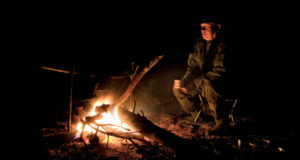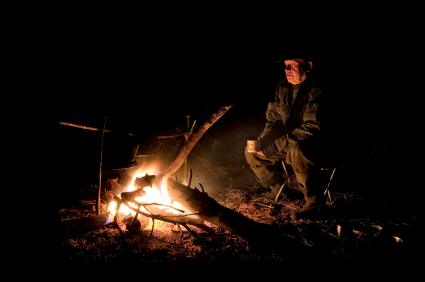 In the last City Slicker’s Guide, we discussed “Bushcraft on a Budget.” Basically, we told you about the items you should have in your kit if you hope to get out there and really enjoy the woods. Well, you’ve got the pack together… so now what?
In the last City Slicker’s Guide, we discussed “Bushcraft on a Budget.” Basically, we told you about the items you should have in your kit if you hope to get out there and really enjoy the woods. Well, you’ve got the pack together… so now what?
Just because you have the right tools doesn’t mean you are ready to forge ahead blindly. You still might need a little extra guidance on tips and tricks about basic things you can do once you’ve pitched camp in a patch of woods. You’re probably going to start getting hungry, feeling thirsty, feeling cold, and getting sleepy. Have no fear though, because if you’ve got a good pack, then we can remedy all of your discomforts so you can continue thoroughly enjoying your time with Mother Nature.
A Historical Perspective
It has only been within the last 100 years that knowledge of these skills has been phased out of everyday understanding. If you were to walk up to your colleague in the cubicle next to you and asked him how to build a fire, he would probably give you a funny look and then suggest you add lighter fluid.
For this reason, we will be taking inspiration from history, seeing what kind of camp gear accompanied them on the trail. How did they sleep? How did they make fire? How did they cook? And how long would their provisions last them? If you can answer these questions, it can give you an idea of your capabilities.
However, your advantage is that we’ve got a good 150 years of advancing technology, culminating in the greatest, most useful material in the known universe: duct tape.
The Giant Misconception
You need stuff. You need lots and lots of stuff. If you try to live in the woods, you are going to need to bring the Volvo and the kitchen sink.
That is the giant misconception, which sadly plagues most of us with the idea that it will break the budget in order to enjoy life in the wild. All too often, we find ourselves spending our hard-earned dollars on the latest gear from those mainline sporting goods stores. However, as we outlined in the last series, you will only need the hardware store, military surplus store, the dollar store, Amazon.com, and maybe a visit to the camp store.
This new tool redefines the survival kit from the ground up…
In addition to that, the more you know about bushcraft, the less you need to carry with you. It helps you whittle down what you can reproduce in the wild and what you simply don’t need (allowing you to leave it at home). Those skills allow you to know what you can’t easily fabricate in the wild (making sure to take it with you).
Before you know it, all you will need is a small pack that is less than twenty pounds.
Understanding Bushcraft
Bushcraft is not necessarily considered survival training. Survival training will do excellently at getting you home in 72 hours with your heart still beating. These articles, however, will be different.
Bushcraft goes beyond survival, which means that you will be able to survive in the woods for weeks at a time, rather than just struggling for just a few days. You will be able to fish and hunt for food, make water drinkable, stay cozy and warm, and get a good night’s sleep.
You’ll learn the general order of how best to survive and stay comfortable. For instance, you wouldn’t build your shelter first, especially if you haven’t had water for several hours. You need to build a fire, which will allow you to boil water you were able to extract from a local stream. Then, once you are hydrated, you can begin the task of setting up camp.
These articles will not be extremely comprehensive, but they will give you a general direction. No, we won’t be able to talk about how to build a debris shelter, but we will be able to talk about how to setup your tarp shelter as a first step. While it may not be as comfortable being inside a cozy hut, until you build that structure, a tarp shelter will do the job for now.
In the same way, don’t worry if you aren’t very good at hunting with alternative weapons like slingshots. What you need to do is practice with these weapons while you exhaust your rifle ammunition. The key is making slow transitions to inexhaustible resources while you deplete your exhaustible resources. The same goes with knowledge and skill.
Keep in mind that you will never stop learning, as there are varying methods and tricks for everything from sharpening your knife to skinning a raccoon. We are trying to help you adopt your own system that works for you. As we said in the last series, our hope is that you realize that you can do this. You can enjoy extended stays in the woods. You don’t need a house, a car, a plasma-screen TV, or even the credit cards in your wallet. All you need is you.












